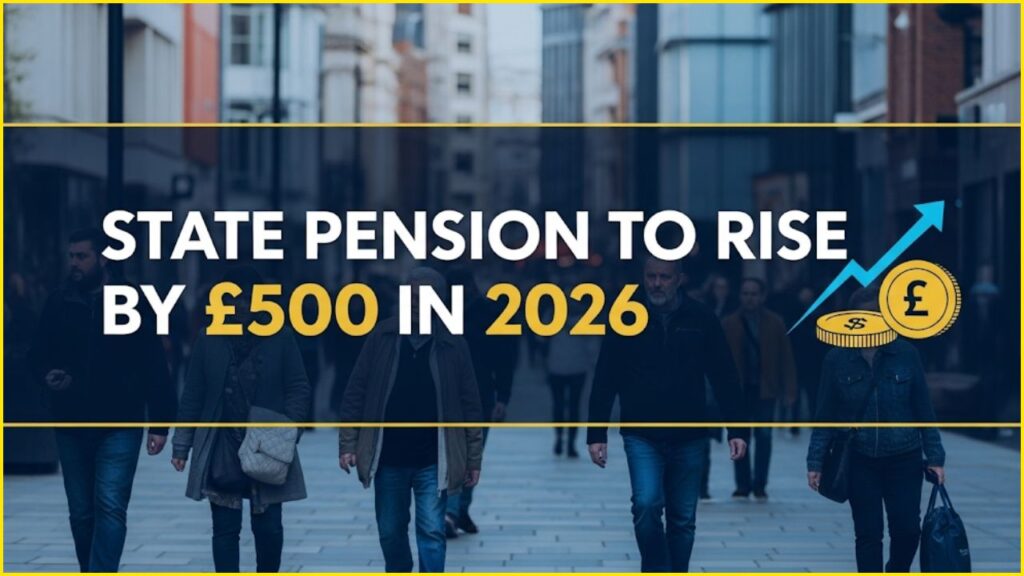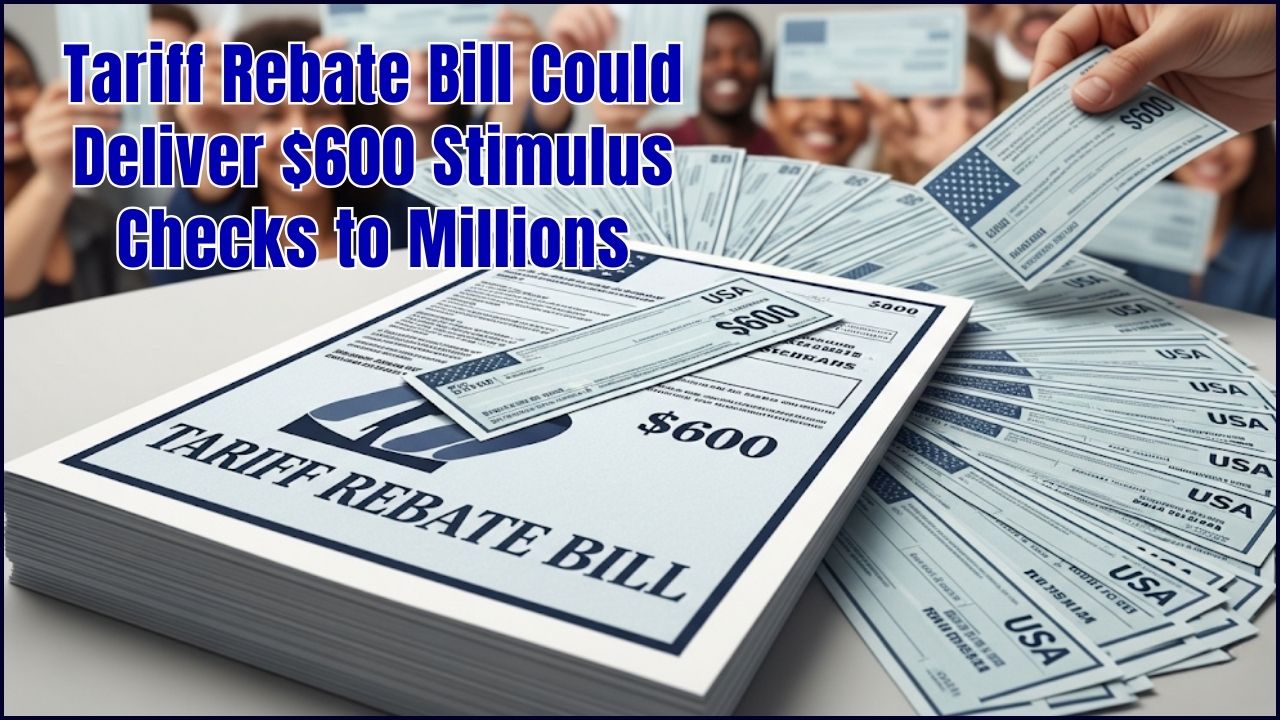The State Pension to rise by £500 in 2026 is one of the biggest money stories for UK retirees and future pensioners. Thanks to the triple lock promise, the government guarantees your pension increases every April based on inflation, wage growth, or 2.5% — whichever is highest. But while this sounds like a sweet deal, the reality is a little more complicated.

This article will break it all down in plain English — with context, history, expert tips, and practical advice — so you know exactly who gets it, when, and what it means for your pocket.
State Pension to Rise by £500 in 2026
| Aspect | Details |
|---|---|
| When? | April 2026 (2026/27 tax year) |
| Increase | |
| New Annual Pension | ~£12,451–£12,512 (up to £12,631 if 5.5% rise) |
| Who Gets It? | Recipients of the full new State Pension (35+ NI years) |
| Tax Impact | Many pensioners may exceed £12,570 personal allowance |
| Official Reference | Gov.uk – State Pension Guidance |
The State Pension rise of £500 in 2026 is welcome news for retirees. It means extra cash, but with the tax-free threshold frozen, many pensioners may find themselves paying income tax for the first time.
By planning ahead — checking NI records, exploring Pension Credit, and preparing for possible tax bills — you can make sure this boost works in your favor. Retirement planning is all about staying one step ahead.
Why the Pension Is Rising: The Triple Lock Promise
The triple lock is like a safety net for pensioners. Every year, pensions increase by:
- Inflation – If prices rise sharply, pensions go up to match.
- Average wages – If workers’ pay increases, pensions rise accordingly.
- 2.5% minimum – Even if both inflation and wages are low, pensions still increase by at least this.
Whichever is higher gets chosen. In 2026, the prediction is a 4–4.5% rise, adding around £500 extra a year for people on the full new State Pension.
A Look Back: How Much Have Pensions Risen Before?
Let’s take a quick trip down memory lane:
- 2022/23: Record-breaking 10.1% rise thanks to inflation.
- 2023/24: Another chunky 8.5% rise, this time linked to wage growth.
- 2025 forecast: A modest ~3%.
- 2026 forecast: ~4–4.5% (the “£500 boost” everyone’s talking about).
This shows the triple lock really can swing your income dramatically year-to-year.
How Does the UK Compare to Other Countries?
Believe it or not, UK pensioners get less bang for their buck than retirees in many other countries.
- UK: ~29% of average earnings (OECD data).
- USA: Social Security replaces ~40% of average earnings.
- EU average: ~58%.
So while £500 feels good, many argue it still lags behind the cost of living compared to neighbors abroad.
Who Qualifies for the 2026 Pension Rise?
You’ll benefit if you’re already getting the State Pension or start claiming it from April 2026 onward. To be clear:
- Full New State Pension: For those with 35 qualifying years of NI contributions.
- Partial Pension: If you’ve got fewer years, you’ll still see an increase, just on a smaller base.
- Eligibility by Birth Year:
- Men born on/after 6 April 1951.
- Women born on/after 6 April 1953.
The Tax Twist: Why Some Pensioners Won’t Feel Richer
Here’s the catch: while pensions are going up, the personal allowance (tax-free income threshold) stays frozen at £12,570.
That means:
- The new pension of ~£12,500 puts you right up against the allowance.
- Any extra income (private pension, part-time job, or even savings interest) could push you into paying tax.
- Some will pay income tax on their State Pension for the first time ever.
Financial planners call this “fiscal drag” — inflation lifts incomes, but tax thresholds stay put.
State Pension: 2025 vs. 2026
This table shows the clear difference between the current State Pension rate and the expected increase in 2026.
| Pension Type | Current Rate (2025/26) | New Rate (2026/27) | Expected Annual Increase |
| New State Pension | £230.25 per week | £240.00 per week | £507.00 per year |
| Basic State Pension | £176.45 per week | £186.00 per week | £499.60 per year |
Note: The new rates are an estimate based on current forecasts for average earnings growth.
Real-Life Example: Meet Mary
Mary, 67, has 35+ years of NI contributions. In 2025/26, she earns about £11,973 from her pension.
Come April 2026, this rises to about £12,500. Mary also gets a small £1,500 private pension.
Her total = £14,000. That’s above the £12,570 threshold, meaning she owes income tax for the first time.
How Will This Affect Your Cost of Living?
Let’s keep it real.
- Energy bills: Still forecast to remain high in 2026.
- Groceries: Food inflation has slowed but is still stubborn.
- Healthcare: Prescription costs and dental care are rising.
So, while £500 is welcome, it may not feel like a big win in practice.
Practical Advice: How to Prepare for 2026
Here’s your action plan to make the most of the pension rise:
1. Check Your NI Record
Fill any gaps to maximize your pension. You can backpay for some years.
2. Review Your Tax Status
If you’re near the threshold, be prepared for tax deductions.
3. Think About Deferring
If you don’t need the pension immediately, delaying can grow your future payments.
4. Explore Pension Credit
If your income is still low, Pension Credit could unlock extra benefits.
Top 3 Mistakes to Avoid
Don’t forget about other benefits: Claiming the State Pension doesn’t automatically mean you’re ineligible for other help. If you have a low income, you might still be able to get Pension Credit, which could provide additional support and unlock other benefits.
Don’t wait to claim: You won’t get your State Pension automatically. You must claim it. The government should send you a letter a few months before you reach State Pension age, but if you don’t receive it, you can still claim online.
Don’t assume you won’t qualify: Even if you have gaps in your National Insurance record, you might still get a State Pension. The government can check your record, and you may even be able to pay voluntary contributions to fill gaps.
What Experts Say
“This £500 rise is good news, but pensioners need to be aware of the tax implications. More retirees will be pulled into the tax system unless allowances change,” says Helen Morrissey, head of retirement analysis at Hargreaves Lansdown.
Money charities like Age UK also warn that many pensioners don’t claim benefits they’re entitled to — missing out on hundreds or even thousands of pounds each year.
Quick Checklist: What to Do Next
Check your State Pension forecast.
Review your tax position.
Consider filling NI gaps.
Explore deferring your pension if possible.
Claim Pension Credit if eligible.
Budget realistically for rising costs.
FAQs
Q: Will I get the pension rise automatically?
Yes, it happens each April without you needing to apply.
Q: Can I still work while on State Pension?
Yes. But earnings plus pension may be taxed.
Q: How do I know if I’ll get the full amount?
Check your NI record on Gov.uk.
Q: Could the increase be more than £500?
Yes, if wage growth surprises on the upside, it could be closer to £600.












